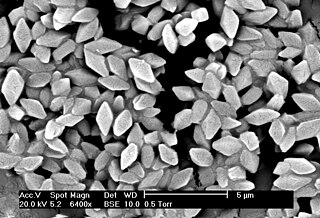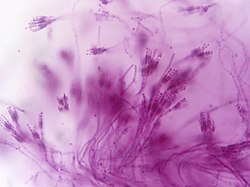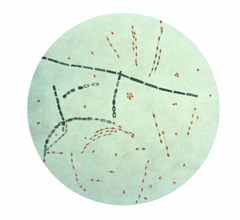WHAT IS MICROBIOLOGY?
The study of microscopic organism such as, bacteria, virus, fungi , protozoa and archaea which cannot be seen by naked eyes but can be seen by using microscope.
| Thiomargarita namibiensis, a giant bacteria in the world found in the ocean sediments of the continental shelf of Namibia, Africa |
Application in Microbiology
-production of antibiotics
-use in industrial such as bread,cheese etc
-provide numerous drugs
-act as natural insect killer in garden
-nitrogen fixation
-used as thickening and stabilizing agent such as in water based paint and cosmetic
-production of antibiotics
-use in industrial such as bread,cheese etc
-provide numerous drugs
-act as natural insect killer in garden
-nitrogen fixation
-used as thickening and stabilizing agent such as in water based paint and cosmetic

Bacillus thuringiensis, used as biological pesticide for insecticides

Penicillium produce penicillin used as antibiotic also used for
cheesemaking
Watermelon snow or snow algae is Chlamydomonas nivalis
Deinococcus radiodurans is an extremophilic bacterium called as
canon of bacteria which resistance of radiation, vacuum, acid and also
survive in cold.

Bacillus anthracis is agent of anthrax
Bacteria as Art
Biophysicists are growing Petri dishes of different species of bacteria in order to develop new antibiotic. The bacteria are subjected to different temperatures and have limited sources of food inside the dish. This cause most colonies to communicate and reproduce. Their growth results in unique patterns of varying colors a sort of "bacteria painting".
How "Bacteria Talk"
Bacteria grow twice their size by cut themselves down in the middle and become two and continue. They also a single cell microscopic organisms. Besides, they only have a piece of DNA, very few of genes and genetic information to encodes all the traits that they carry out. All bacteria can talk to each other by making chemical words and recognize those words then turn on group behaviors called a quorum sensing.
Pleomorphic
- the bacteria have ability to alter shape or size in response to environment condition example Deinococcaceae family
- have lack of cell wall
Microplasma
- the smallest organism in the world
- can be generated at a variety of temperature and pressure, existing as either thermal or non-thermal
- wall-less which is lack of cell wall
Thermoplasma
- genus of archaea which is thrive in acidic and high-temperature environments
- respire using sulfur and organic carbon
- do not contain cell wall
Vampyrellid
- species attacks Mougeotia cells
- makes a large hole in the algal cell wall
No comments:
Post a Comment